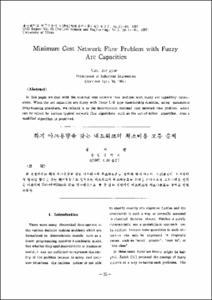거골하 관절을 침범한 종골 골절에 있어서 광범위 외측 도달법을 이용한 관혈적 치료
- Alternative Title
- Operative Treatment with Extensive Lateral Approach in Intraarticular Fracture of Calcaneus
- Abstract
- Accurate anatomical reduction, rigid internal fixation and early mobilization are essential for good prognosis especially in the intraarticular fractures. Fractures of the calcaneus involving the subtalar joint have controversy for treatment method because of the anatomical complexity and hence difficulty of accurate reduction and rigid internal fixation.
We analyzed 26 cases (15 males, 6 females) of the calcaneal fractures involving the subtaler joint, which were treated by open reduction and internal fixation from May, 1992 to Feb., 1995 in Asan Medical Center. The average follow-up period was 18.3 months ranged from two to forty three months.
According to the Essex-Lopresti classification, there were 12 cases of joint depression type, 11 cases of tongue type, and 3 cases of comminuted type. In 10 cases which were evaluated with CT scan, there were 4 cases of type Ⅱ, 4 cases of type Ⅲ, and 2 cases of type Ⅳ according to the Sander's classification.
We used the extensive lateral approach and applied cervical H-plate or reconstruction plate in most cases for internal fixation.
The results of the treatment were obtained as followed ; Bohler angle was recovered on the average 27.0°from -3.5°preoperatively to 23.5°postoperatively ; Gissane angle, 0.5°from 119.1°to 119.6°; the height of heel, 19% to 96% and the width of the calcaneus was reduced 16% to 105% of contralateral one respectively. The functional results of operation were good or excellent, but those of severely comminuted type were unsatisfactory.
We concluded that the fractures of the calcaneus are still unsolved problem, but should be managed in the principle of the treatment of the intraarticular fracture, and this can be done through the extensive lateral approach with ease and safe.
Accurate anatomical reduction, rigid internal fixation and early mobilization are essential for good prognosis especially in the intraarticular fractures. Fractures of the calcaneus involving the subtalar joint have controversy for treatment method because of the anatomical complexity and hence difficulty of accurate reduction and rigid internal fixation.
We analyzed 26 cases (15 males, 6 females) of the calcaneal fractures involving the subtaler joint, which were treated by open reduction and internal fixation from May, 1992 to Feb., 1995 in Asan Medical Center. The average follow-up period was 18.3 months ranged from two to forty three months.
According to the Essex-Lopresti classification, there were 12 cases of joint depression type, 11 cases of tongue type, and 3 cases of comminuted type. In 10 cases which were evaluated with CT scan, there were 4 cases of type Ⅱ, 4 cases of type Ⅲ, and 2 cases of type Ⅳ according to the Sander's classification.
We used the extensive lateral approach and applied cervical H-plate or reconstruction plate in most cases for internal fixation.
The results of the treatment were obtained as followed ; Bohler angle was recovered on the average 27.0°from -3.5°preoperatively to 23.5°postoperatively ; Gissane angle, 0.5°from 119.1°to 119.6°; the height of heel, 19% to 96% and the width of the calcaneus was reduced 16% to 105% of contralateral one respectively. The functional results of operation were good or excellent, but those of severely comminuted type were unsatisfactory.
We concluded that the fractures of the calcaneus are still unsolved problem, but should be managed in the principle of the treatment of the intraarticular fracture, and this can be done through the extensive lateral approach with ease and safe.
- Issued Date
- 1996
- Type
- Research Laboratory
- Alternative Author(s)
- Kim, Jung-Jae; Lee, Jik-Chang
- Publisher
- 울산의대학술지
- Language
- kor
- Rights
- 울산대학교 저작물은 저작권에 의해 보호받습니다.
- Citation Volume
- 5
- Citation Number
- 1
- Citation Start Page
- 65
- Citation End Page
- 75
- Appears in Collections:
- Research Laboratory > The ULSAN university medical journal
- 파일 목록
-
-
Download
 000002025436.pdf
기타 데이터 / 274.04 kB / Adobe PDF
000002025436.pdf
기타 데이터 / 274.04 kB / Adobe PDF
-
Items in Repository are protected by copyright, with all rights reserved, unless otherwise indicated.